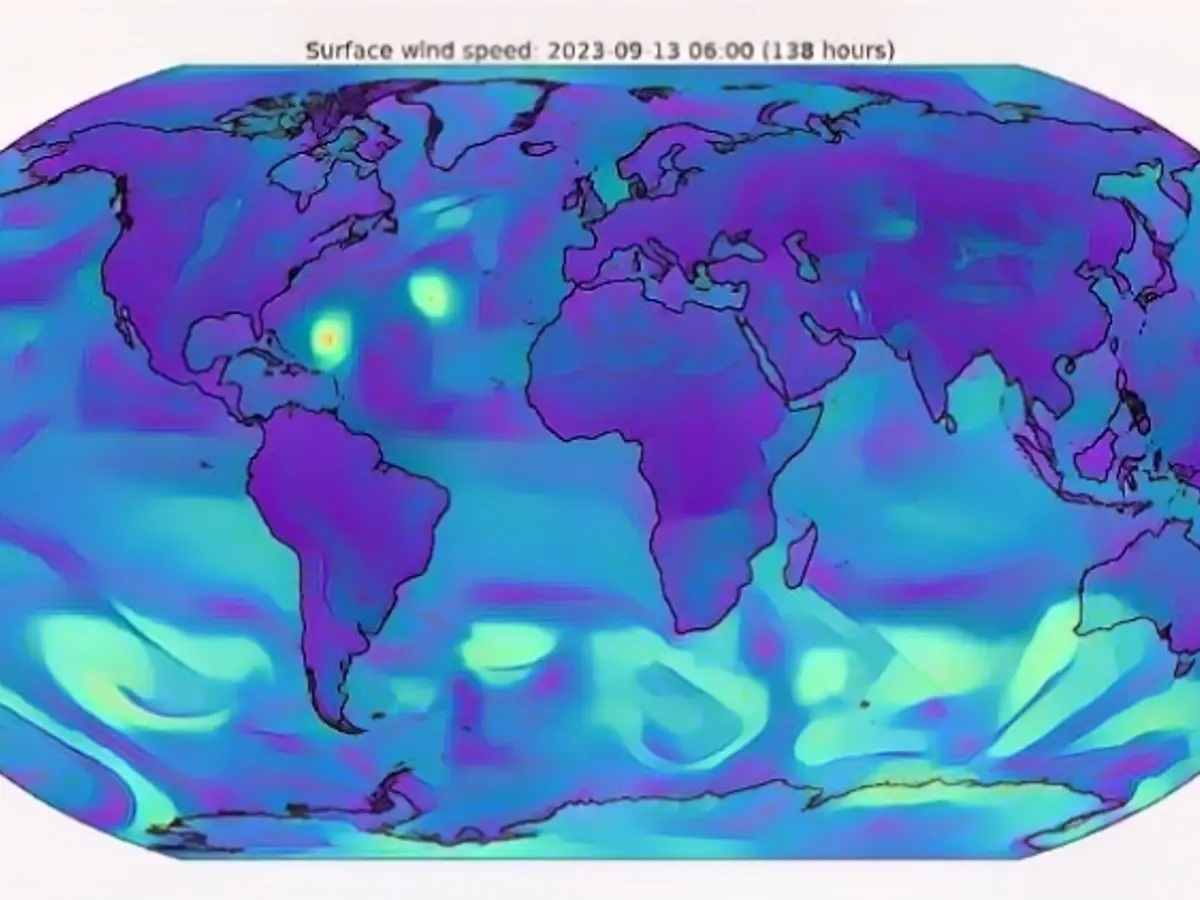New AI beats conventional weather models
Google DeepMind is causing a stir with its new weather AI GraphCast, and not just among meteorologists. In some cases, it outperforms the most powerful weather models - and does so with impressive efficiency. Will AI soon replace traditional weather forecasting?
Researchers from Google DeepMind recently presented a new weather AI called GraphCast in a study published in the journal Science. According to them, it can calculate very high-quality 10-day forecasts with remarkable efficiency. Even according to experts from the European Centre for Medium-Range Weather Forecasts (ECMWF), GraphCast can forecast variables such as temperature and precipitation better than the ECMWF's best weather model (IFS HRES) in up to 90 percent of cases. It is also often possible to forecast the paths of tropical cyclones several days longer in advance than with conventional weather models.
GraphCast also achieves several orders of magnitude greater efficiency, as the Google AI requires significantly less computing power and, according to Google, even runs on just a single processor. And yet it delivers the results a thousand times faster - a remarkable improvement. The researchers describe this as a turning point for weather forecasting.
Previous methods extremely time-consuming
Traditional, numerical weather models usually run in huge data centers on expensive and energy-guzzling supercomputers and still often take several hours per calculation run due to their great complexity. Such an improvement with the help of AI, as with GraphCast, can therefore mean enormous cost savings.
The improvement of the numerical models themselves also consumes huge resources and occupies many different fields of research in meteorology and other natural sciences. It is highly unlikely that basic research itself will become less important as a result, as it is also crucial for the interpretation and understanding of models and forecasts. However, the use of AI models can probably also lead to better use of available resources with regard to the complex and expensive optimization process of classic weather models.
How does AI actually work?
Artificial intelligence usually refers to algorithms that use so-called neural networks. These consist of many so-called nodes, which form a widely ramified network similar to nerve cells in the human brain. The connections between these nodes are initially all of equal value, but are changed or weighted through training using sample data sets. In this way, a neural network is trained to recognize patterns in large data sets and then, for example, to classify input data or derive predictions from it. After training, the AI can then be unleashed on other data and, depending on the objective, gain the desired insights from this data. In principle, this is also possible with weather data in the same way.
Conventional weather forecasting, on the other hand, is based on mathematical and physical models that have been improved over decades and use highly complex formulas to calculate a forecast run from an initial data set. For physical reasons, however, many of these formulas can only be determined and applied approximately. The more precise and high-resolution (spatially and temporally) a model or forecast needs to be, the greater the resources required in the respective data centers. Thanks to its completely different approach, AI manages to get around this problem to some extent.
Weaknesses of the AI approach
However, the completely different approach of AI technology also brings problems with it. And AI is not superior to previous weather models in all cases. Take, for example, the recent sudden and surprising occurrence of hurricane Otis off the coast of Mexico, which experienced extreme intensification before hitting the Mexican coast near Acapulco with unforeseen destructive force. Here, GraphCast was unable to demonstrate any superiority over the conventional weather models, as was the case with some recent storms in Central Europe.
This could be due to the fact that the AI can naturally only be trained with historical weather data. In times of accelerating climate change and imminent or already initiated fundamental changes to the climate system, this could be a decisive weakness. New developments due to climate change could be underestimated or completely misjudged by the AI.
Can AI replace conventional weather forecasting?
In a study they published, researchers at the Jülich Supercomputing Center considered it theoretically conceivable that traditional weather forecasting using numerical weather models could one day be completely replaced by AI approaches as early as 2021. However, this would still require major technological breakthroughs, in particular the integration of the decisive physical laws into the AI algorithms. In this way, the strengths of traditional weather forecasting could be combined with those of AI and the previous weaknesses of AI could be eliminated.
So far, AI can only supplement the classic numerical models or replace parts of the classic workflow. Until AI can take over the helm of weather forecasting completely, human intelligence will first have to achieve a number of feats in this field. The Google researchers themselves also see their work so far only as a supplement to the existing models. AI is therefore not yet a panacea for the existing problems in weather forecasting, but the speed of development is remarkable.
In the realm of meteorological research, researchers are exploring the potential of integrating artificial intelligence techniques into weather forecasting, aiming to improve efficiency and accuracy. For instance, a study on the AI GraphCast revealed its capability to outperform conventional weather models in forecasting temperature and precipitation, even exceeding the European Centre for Medium-Range Weather Forecasts (ECMWF)'s best model in numerous instances.
In the field of education, the introduction of AI in weather forecasting could inspire a new generation of researchers to explore the intersection of artificial intelligence, climate science, and predictive modeling, broadening the scope of weather forecasting and understanding climate patterns.
Source: www.ntv.de








